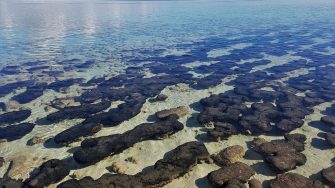
Synopsis
Ask five geologists what the oldest evidence for life on Earth is and you’ll get five different answers. At least one will point to the stromatolites that invoke sedimentary structures from younger and modern environments wherein microbial mats account for sediment accretion with distinctive morphology.
Currently, the oldest convincing stromatolites are from the 3.48 billion–years–old sedimentary rocks in the Dresser Formation of the Pilbara Region (Western Australia). However, since their discovery 40 years ago, uniquely biogenic interpretations have been highly controversial. This is due to the weathering, which has erased reliable biosignatures (e.g., microfossils or biomolecules) and the morphology of stromatolitic surface textures. These textures alone are considered by some as an only ambiguous indicator of biogenicity.
The project: “Stromatolites of the 3.5 Billion–Year–Old Dresser Formation: A benchmark for Evidence of the Earliest Life on Earth?” involves a detailed examination of unweathered stromatolites in newly acquired drill cores, which in contrast to altered examples from the surface, show original mineralogy and chemistry. These unweathered stromatolites hence have superior biosignature preservation potential.
Aims
In this project, you’ll examine the unweathered stromatolite materials of Dresser Formation drill cores for evidences of primordial life using a diverse range of high–resolution analytical techniques, such as Electron Microscopy and Raman Spectroscopy analysis. If you have no prior skills in these high-resolution analytical techniques, you’ll get the chance to learn from us.
Students applying for this project should have an interest in geobiology and the use of advanced approaches for chemical and mineralogical analysis.
Student benefits
You’ll learn how to design and conduct research in geobiology based on scientific methodology and will gain experience in the following areas:
- the use of advanced analytical methods
- data analysis and interpretation
- writing and science communication.
All students in our group are encouraged and supported to publish their research in international scientific journals. Remember, success in your investigations could aid the establishment of a new benchmark for the oldest evidence of life on our planet, and our understanding of habitable environments on the early Earth.
Supervisors: Prof Chris Turney, Dr Jonathan Palmer and Dr Zoë Thomas
Get involved
To learn more about this project, contact Dr Raphael Baumgartner or Prof Martin Van Kranendonk.
E: r.baumgartner@unsw.edu.au
T: +61 423 536 167
E: m.vankranendonk@unsw.edu.au
T: +61 2 9385 2439
